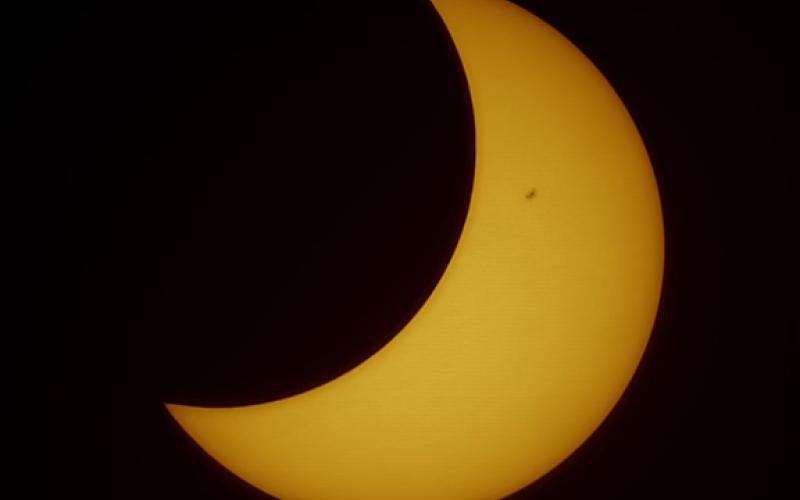If you want to see a total eclipse over North and South America, Monday is the last chance you'll have for 20 years, as the next one doesn't happen until 2044. And while Young Harris College is not in the direct path, there will be an opportunity to view it Monday, April 8.
"While we do not lie in the path of totality, Young Harris and surrounding areas will still experience a partial solar eclipse," said Lauren Albin, director of the O. Wayne Rollins Planetarium at Young Harris College.
"You can safely view the partial eclipse through a pair of ISO-certified eclipse glasses. Free eclipse glasses are available to the community at a few different locations on campus-outside the Rollins Planetarium, in the Office of Communications & in the Zell & Shirley Miller Library."
There are ways to observe a partial eclipse indirectly, including viewing the partial shadow of the Sun. You can do this by filtering the light of the sun through a collider or other perforated material, including the pinholes of a button, the small holes in a Ritz cracker or through a straw hat. Another method to filter sunlight is by standing under a tree and looking at the projections of the eclipsed sun on the sidewalk.
In Young Harris, the times for the partial eclipse are Monday, April 8; begins at 1:48 p.m., with max view at 3:06 p.m., before ending at 4:22 p.m. A solar eclipse is a unique phenomenon special to Earth, Albin said.
"The Earth's moon is about 400 times smaller than the sun, but the sun is about 400 times further away than the Moon from Earth. Therefore, the sun and moon appear to be about the same size in the sky," Albin said.
"No other planet has a moon that is comparable to the size of the Sun, so only Earth gets to witness such a phenomenon. Additionally, our moon is slowly migrating farther from the Earth. Therefore, at some point in Earth's future, the moon will no longer appear as the same size as the sun in our sky, and we will never witness a total solar eclipse again!"
The following link talks about the upcoming eclipse on April 8 and the 2017 total solar eclipse that was visible from Western North Carolina and north Georgia – youtube.com/watch?v=VAEUYM4Een4&ab_channel=NPR

